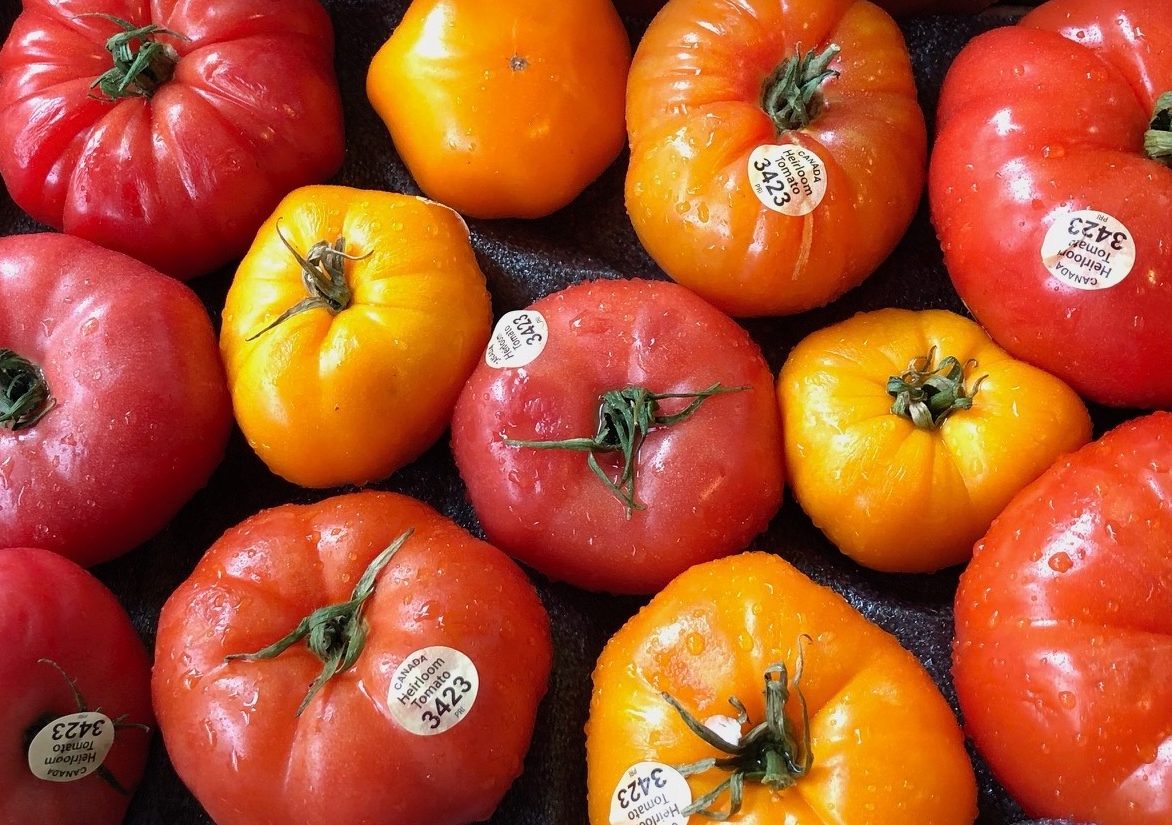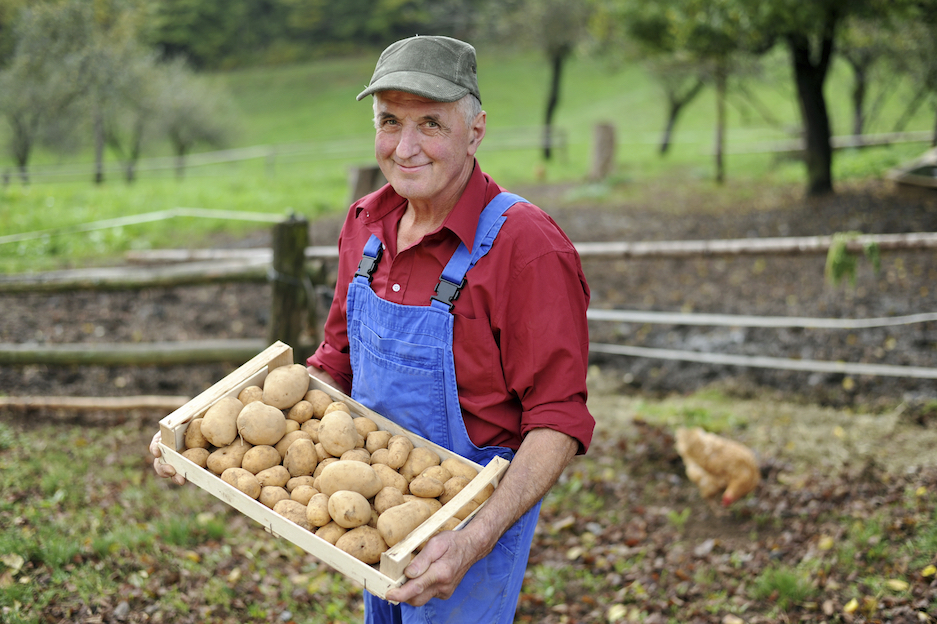All the World Treasures an Heirloom – Tomato, That Is
Everyone Can Enjoy an Heirloom
Spring weather heralds the start of weekend farmers markets offering colorful fruits and vegetables, artisanal cheeses, and home-made baked goods. Along the east coast, tomatoes play a starring role at the local farmers markets. Green, yellow, orange, brown, grape tomatoes, cherry tomatoes, large, small – the variety seems endless.
Farmers markets are a great way to shop fresh and seasonal, but if you can’t get there, you can still find an increasingly impressive selection of tomatoes at your local grocery store. Are the tomatoes in the organic corner market the same tomatoes you get from the farmer? Unlikely. For the most part local farmers cannot sustain supply to large grocery chains where consumers are demand tomatoes year round. To meet that demand, the business of the heirloom tomato has grown global.
Pimp my Tomato
Italians made tomatoes a kitchen staple, but the tomato didn’t originate in Europe. Researchers have traced its origin to the “pimp,” a pea-sized red fruit that grows naturally in Peru and Southern Ecuador. As with so many foods we love, the Mexicans domesticated the tomato and Spanish explorers brought it home, where locals created a sweeter and tastier, but also more vulnerable, tomato.
Whether due to the preferences of grocers or their shoppers, the market overwhelmingly demands that growers focus on the few breeds of tomatoes that dominate our grocery shelves today. Producers worked to change the characteristics of tomatoes through cross-pollination in order to increase yield, to produce uniform shapes and sizes with smooth skin, and to render the tomatoes hardier for transport. Tomatoes are picked while green and artificially ripened with ethylene gas, sacrificing better taste for better looks (the flavor comes from the sugars that develop as the tomato ripens naturally).
Photo: The pimp fruit by David Griffen, Smithsonian.com
The New (Old) Tomato
The strict definition of heirloom tomato is a variety of tomato that has been openly pollinated for more than 50 years. Today, most experts would consider heirlooms as any non-hybrid tomato. Unlike heirlooms, many hybrid vegetables and fruits, while resilient and uniform, produce seeds that cannot reproduce. Therefore, the open pollination principle for heirlooms is key. As a result, it is the seed savers and gardeners with a flair for history that helped propel heirloom tomatoes to their elite status.
In the last decade, consumers started going back to the tomato’s heirloom roots. Top restaurants, prominent chefs, cooking magazines, the farm-to-table movement, and the proliferation of farmers markets have all put heirloom tomato flavor on display. Americans have become more tomato-curious than ever.
Regional is the New Local
Generally speaking, the entire world loves a tomato. As the most consumed vegetable in the world, we devour 130 million tons of tomatoes every year, of which 88 million are sold fresh. The remaining 42 million tons are destined for processing into tomato sauce and other products. China, the European Union, India, the United States, and Turkey are the world’s top producers.
Trade in tomatoes tends to be regional. Asia, Europe, and Africa represent 45 percent, 22 percent, and 12 percent, respectively, of global production, and much of what’s grown in one region is traded there. France, for example, is the fifth largest producer of tomatoes in Europe, exporting one quarter of its production across the European continent, primarily to Germany.
North American Tomato Trade – A Tasty NAFTA Product
About half of fresh tomatoes consumed in the United States are imported. The government applies tariffs to fresh tomatoes from countries we don’t have a free trade agreement with, and the tariffs fluctuate based on the timing of the U.S. growing season. From March 1 to July 14 (when Florida’s volume is highest and California and southeastern producing states begin to ship commercial tomatoes), it’s 3.9 cents per kilogram. Between July 15 until August 31, it goes down to 2.8 cents per kilogram (availability of locally grown tomatoes is highest). September 1 to November 14, it goes up again to 3.9 cents per kilogram. For the remainder of our winter, November 15 until March 1, it goes back down to 2.8 cents per kilogram.
Nearly all of fresh tomatoes we import into the United States come from Mexico (89 percent) and Canada (10 percent) duty-free under NAFTA. NAFTA partners are also the primary destinations for exported American tomatoes, with 77 percent of our exports going to Canada and 20 percent to Mexico. (The United States manufactures 96 percent of the tomatoes it uses in processing.)
Even though they enter the United States duty-free, tomatoes from Mexico are subject to minimum prices that vary based on the season; the price floor for winter tomatoes ranges from 31 cents to 59 cents, while summer tomato prices vary between 24.6 to 46.8 cents, depending on the tomato category. This is because Mexico has gotten very efficient at producing tomatoes year-round, which concerns some segments of American growers, particularly in Florida.
Florida growers are seeking changes to U.S. antidumping and countervailing duty proceedings in the current renegotiations of NAFTA to allow them to pursue dumping cases based on pricing in one specific season versus relying on three years of data, as is currently required. This proposal has created rifts among U.S. growers – primarily Southeast growers who support it and Western growers who fear its consequences. Mexico has also expressed strong opposition. American producers of other fruits and vegetables have also publicly opposed the proposal. They worry Mexico could use the same approach against American exporters of perishable produce.
Global, Regional, Local – It’s All Good
Our love for tomatoes will not recede any time soon. Improvements in technology are helping farmers increase their yields while maintaining or even reducing the acreage they are devoting to tomatoes. But even as trade routes for tomatoes are increasing and broadening, the allure and specialness of a locally-grown fresh tomato remains.
Tomatoes are the most popular plant for amateur home gardeners like myself. And with spring in full bloom, it’s only a matter of time before local tomatoes explode onto the scene in our neighborhood farmers market, exhibiting their versatility and flavor. The heirloom tomato has once again returned to prominence – just sprinkle a little salt on it, and take a satisfying bite. Trust me, you won’t regret it.
Feature photo credit: Heirloom tomatoes from Canada in a New York grocery store by A. Haran










